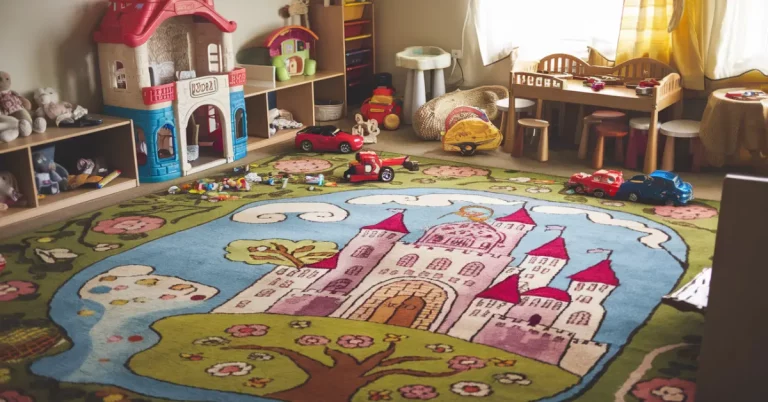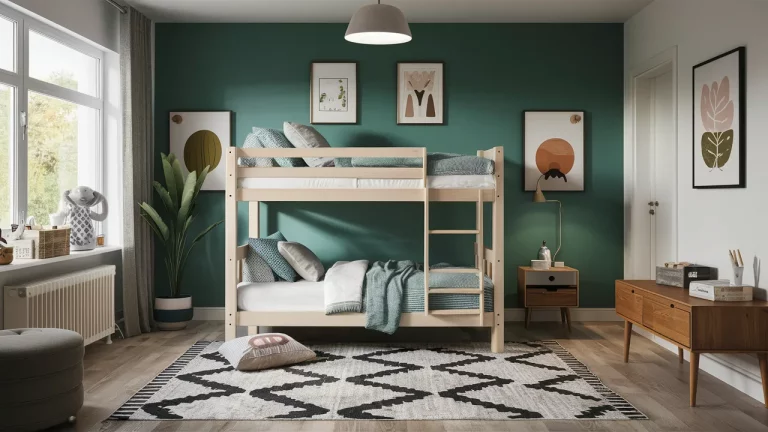How to Design a Kids Bedroom 10×10? TOP Design Ideas for Stylish
A 10×10 room (10 sqm) for a kid’s bedroom can be fun and challenging. With the right approach, you can turn this small space into a stylish and functional haven that sparks imagination and creativity.
This post will look at top design ideas that combine style and practicality. From clever storage solutions to playful themes, you’ll see how to create a bright space that meets your child’s needs and grows with them.
Key Takeaways
- Designing a 10 sqm children’s bedroom balances functionality, safety, and aesthetics to support creativity and growth.
- Safety is essential. Use furniture and materials that meet safety standards and are non-toxic for a healthy environment.
- Maximize space with multi-functional furniture and smart storage solutions to improve utility and reduce clutter.
- Decor should showcase the child’s personality with bright colors and playful themes that inspire imaginative play.
- Focus on minimalism, flexibility, and practicality in design. Use convertible furniture and effective space management to adapt as children grow.
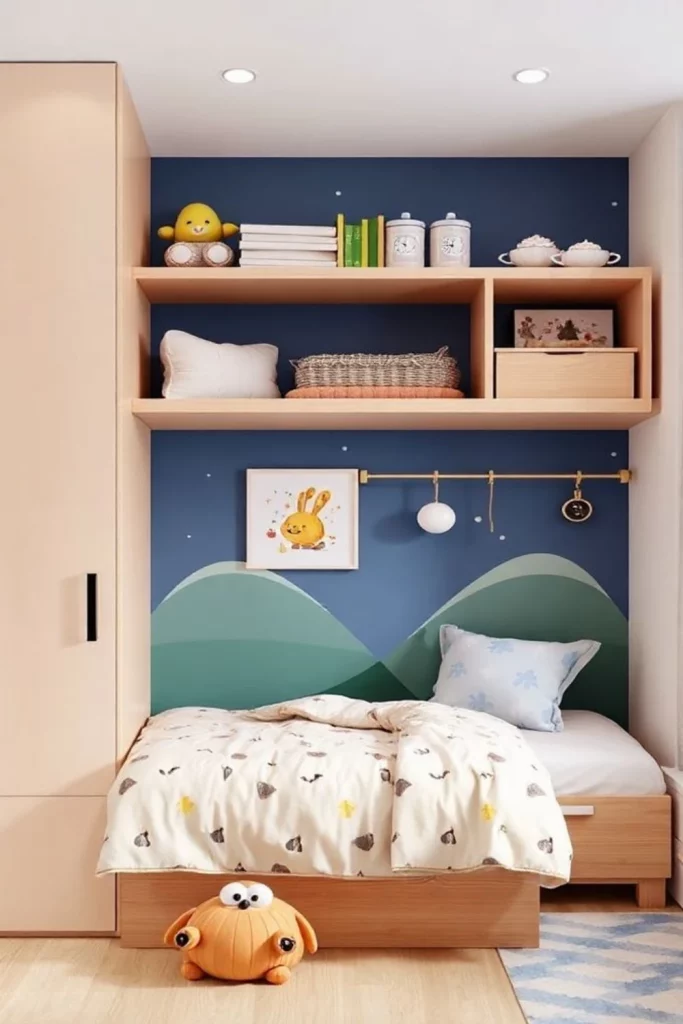
Key Considerations
Several key factors must be considered when designing a children’s bedroom of about 10×10 to create a functional and safe space.
Safety Standards
Safety is crucial in any children’s environment. Parents should prioritize furniture that meets high safety certifications, such as JPMA certification, which covers items from cribs to strollers. Choose non-toxic materials free from harmful chemicals to protect children’s health during play and rest.
Space Optimization
Maximizing available space is essential in a small room. Multi-functional furniture can be very effective. For example, a bed with built-in storage or a desk that doubles as a play area helps keep the room organized and reduces clutter. Using vertical space with shelves also contributes to a more open and functional environment.
Age-Appropriate Design
Select age-appropriate decor and furniture to foster a sense of ownership in children. This design can evolve as they grow, helping the room remain a favorite space. Bright colors and fun themes stimulate creativity and playfulness, supporting the child’s overall development.
Lighting Considerations
Lighting significantly impacts the room’s atmosphere. Simple fixtures like pendant lights or recessed lighting maintain a minimalist vibe without overwhelming the space. Ensure lamps are out of reach of young children, and use socket covers to reduce electrical hazards.
Efficient Storage Solutions
Effective storage is crucial in a small bedroom. Use baskets or closed cabinets to store toys and other items, reducing visual clutter and promoting organization. Furniture that includes storage, such as tent beds with compartments for toys, enhances functionality without sacrificing style.
By considering these factors—safety, space optimization, age-appropriate design, lighting, and storage—parents can create a delightful and secure environment that fosters both play and rest for their children.
Design Themes
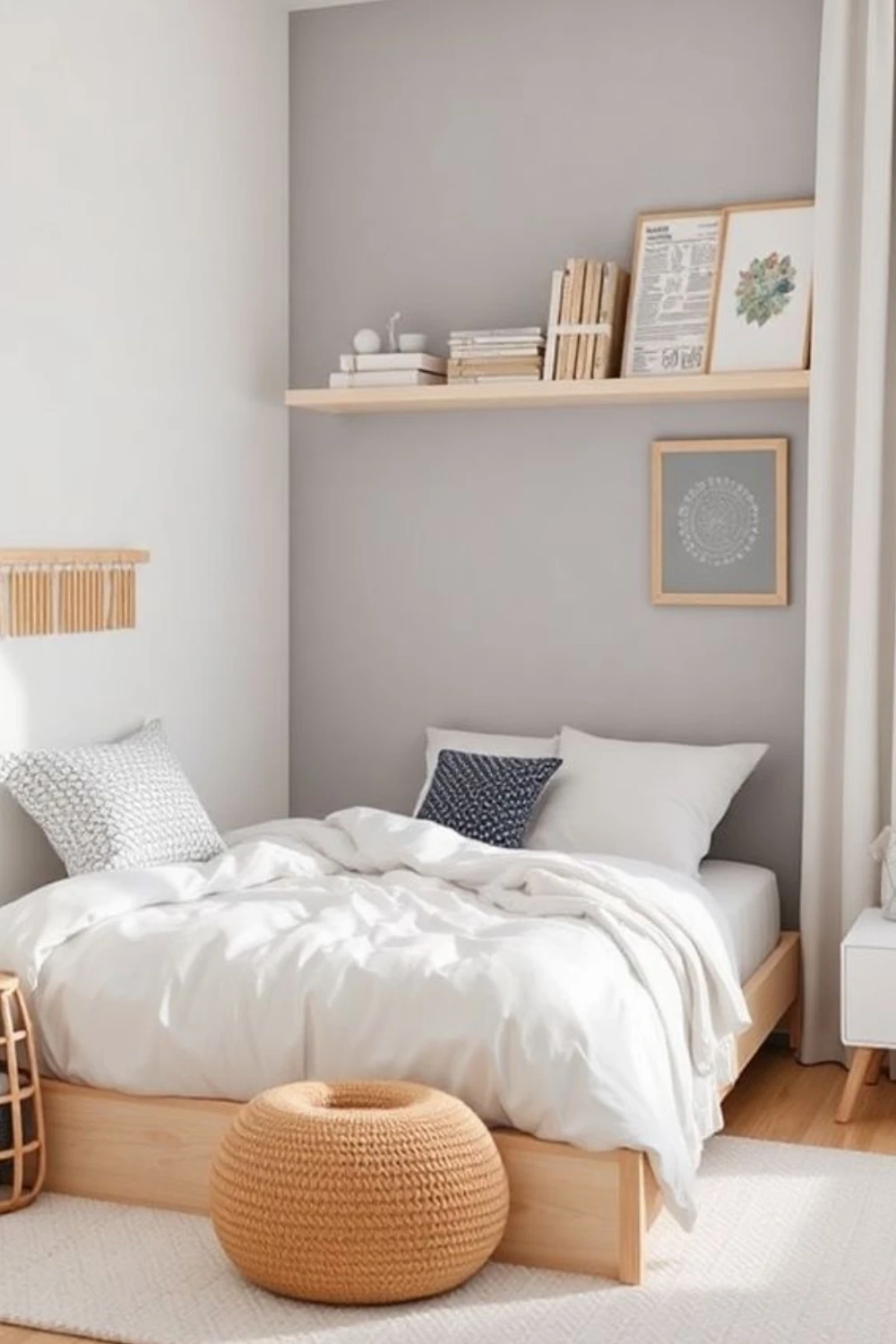
Embracing Minimalism
Minimalist design works well in a small kids’ bedroom. It offers a timeless look and creates a calm atmosphere. Use neutral colors, simple furniture, and clean lines to make the space feel larger. This approach promotes organization by encouraging a clutter-free environment where every item has its place. A minimalist room reduces distractions and fosters relaxation and creativity.
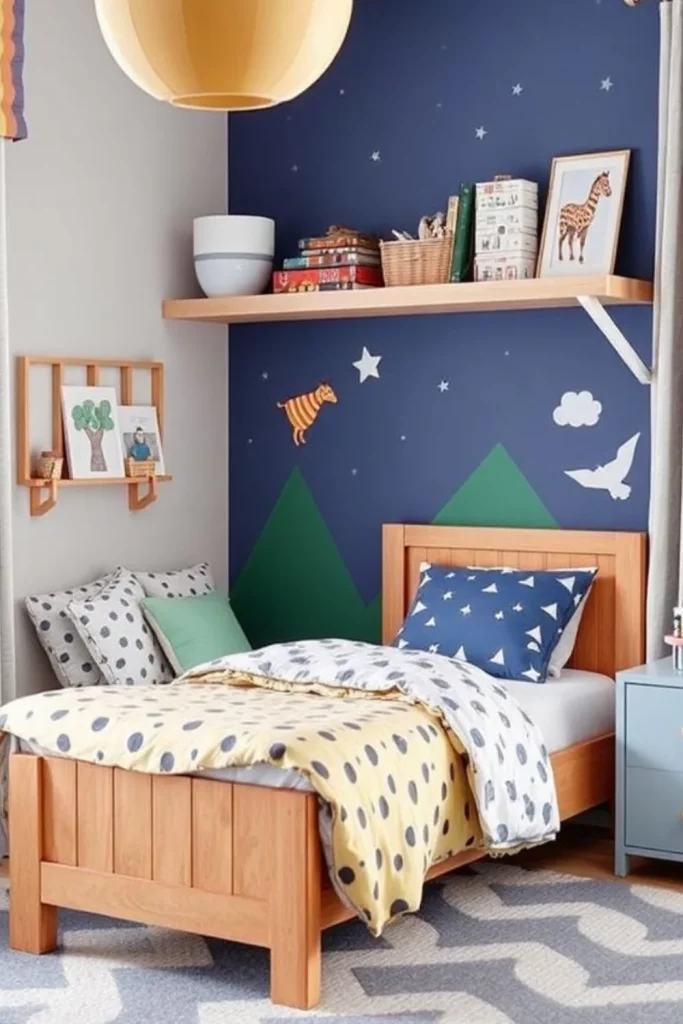
Themed Decor
Choosing a theme that reflects your child’s interests can transform their bedroom into a personal sanctuary. Involve your child in selecting themes like sports, animals, outer space, or fantasy characters. Use themed bedding, curtains, and wall decals to create a cohesive design that showcases their personality. Consider graphic wallpaper or removable decals for easy updates as their tastes change.
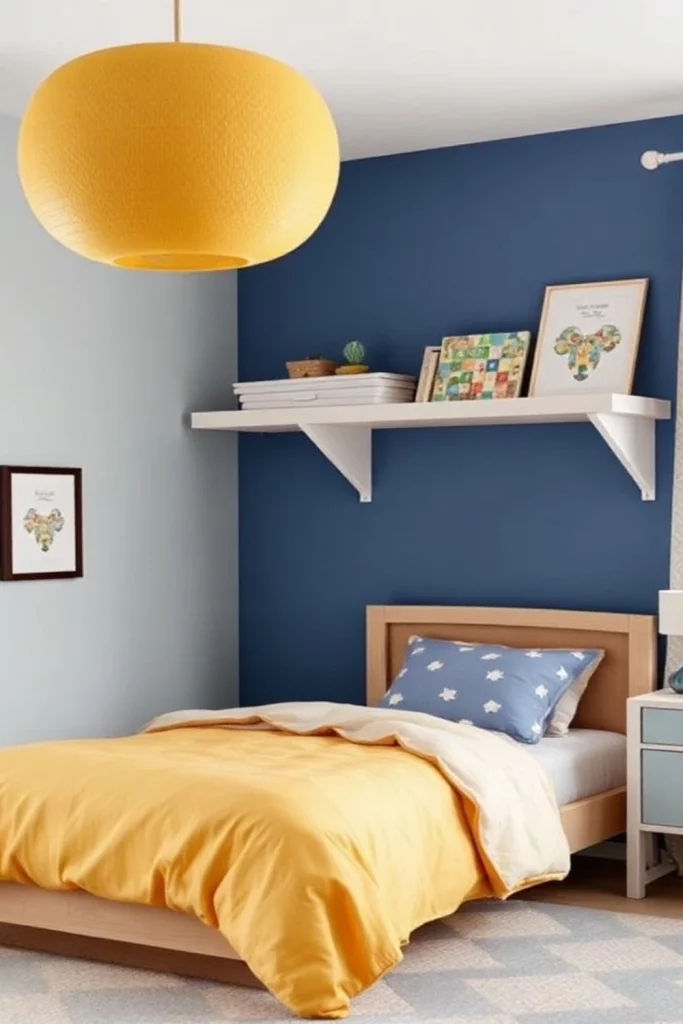
Color Schemes
Selecting the right color scheme can greatly impact the bedroom’s feel. Different palettes cater to various personalities and preferences, ensuring each child has a room that reflects their individuality. Bright colors energize the space, while softer tones create a calming effect.
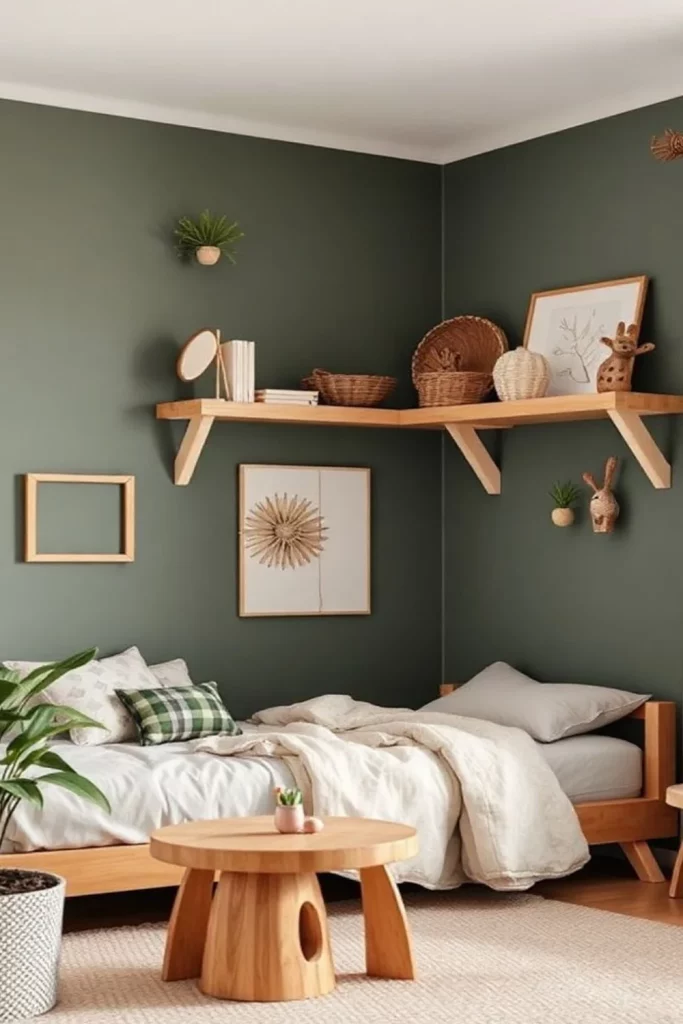
Incorporating Nature
Bringing elements of nature indoors helps children connect with the outdoors. Use earth tones for wall colors and furnishings, and add decorations that mimic natural elements like wood and stone. Open-ended toys and minimalist play encourage imaginative exploration while keeping the room organized.
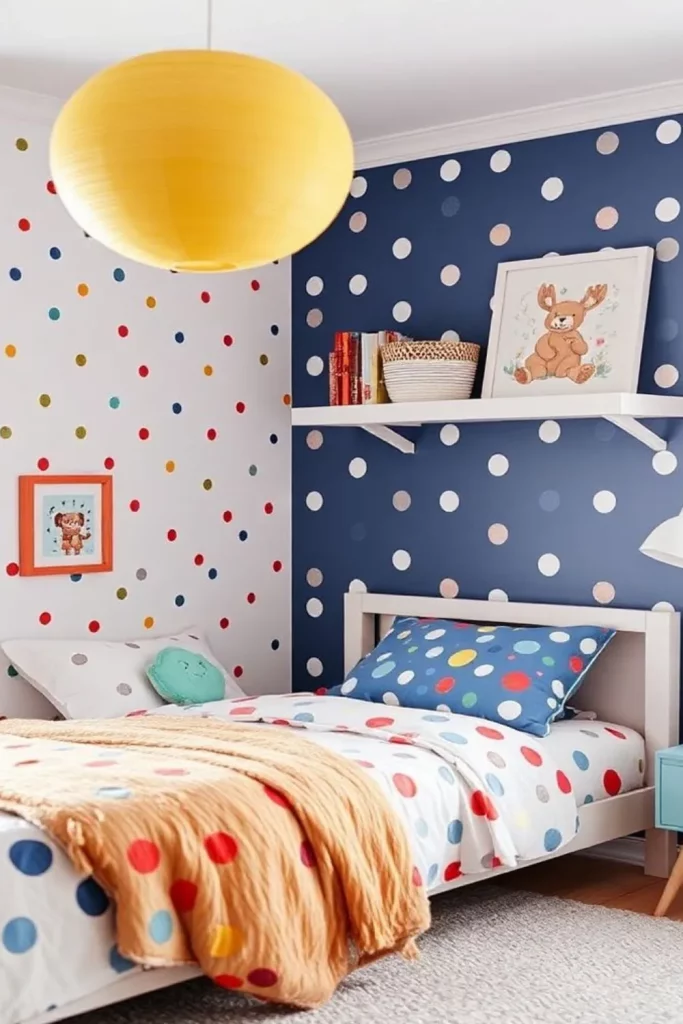
Fun and Playful Elements
Add fun with playful design elements like confetti or polka-dot walls. These features create an energetic atmosphere perfect for kids. This style adapts easily to fit any theme or personality. Accessories like colorful throw pillows and whimsical wall art enhance the playful vibe, allowing the space to grow with your child’s interests.
By combining these design themes, parents can create a small kids’ bedroom that is both functional and reflective of their child’s personality. This approach fosters a nurturing environment for play and rest.
Layout and Space Management
Designing a kids’ bedroom in a compact area of about 10 square meters presents challenges and opportunities for creativity. Effective layout and space management can improve both functionality and aesthetics.
Key Considerations for Layout
When planning the layout, consider several factors to maximize usability and comfort. Think about how easily children can access frequently used items, the arrangement of play areas, and the ease of cleaning. Identify the room’s focal point and how the placement of the bed and other furniture affects temperature and natural light.
Effective Use of Space
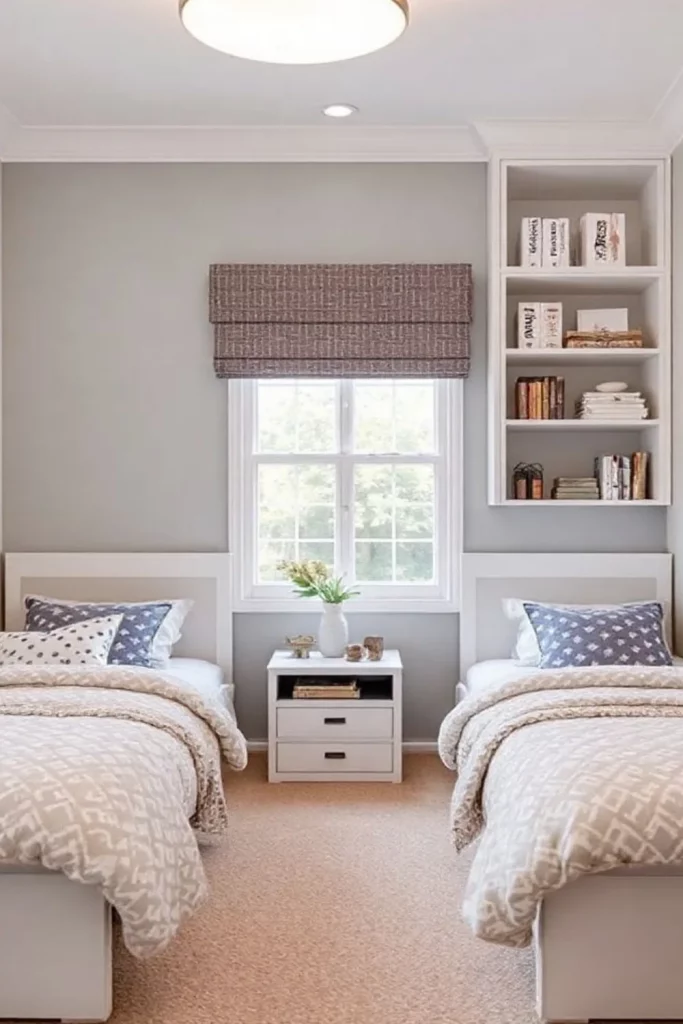
Optimizing Floor Space
A common layout for a 10×10 bedroom is to place twin beds against opposite walls. This arrangement maximizes floor space and allows the beds to serve as daybeds for lounging. Adding shelving and drawer units beside a window can utilize otherwise unused space, creating a built-in effect.
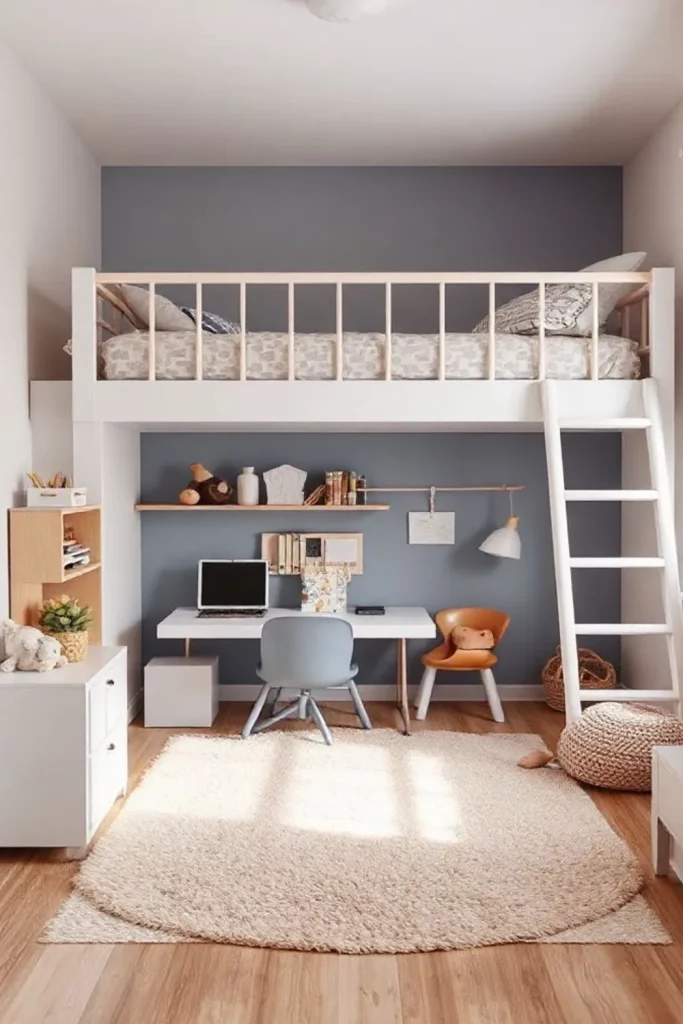
Zoning Different Activities
Creating distinct zones for various activities is essential in a small bedroom. Organize the space into sleeping, studying, and play areas using furniture or rugs as visual dividers. For example, a soft rug can define a cozy play area under a loft bed, while a well-lit corner can serve as a study space. This zoning helps children associate specific areas with their activities, improving focus and creativity.
Furniture Solutions
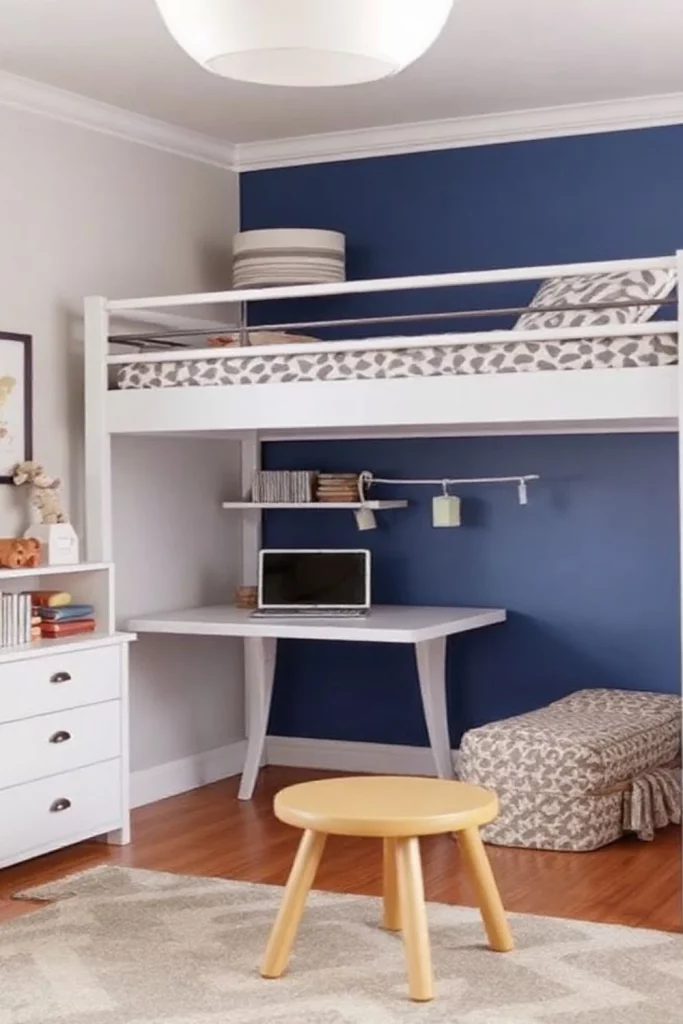
Convertible and Space-Saving Furniture
Selecting the right furniture is crucial for maximizing space without sacrificing style. Convertible pieces like bunk beds or loft beds free up floor space beneath for play areas or workstations. Foldable chairs or stackable stools provide extra seating when needed but can be easily stored away when not in use, keeping the room open for activities.
Organizing for Efficiency
Effective organization enhances the room’s functionality. Use vertical space with wall-mounted shelves for accessible storage that keep the floor clear. Open shelving can display favorite toys and books, adding both storage and a personal touch. Choose appropriately sized furniture to prevent the room from feeling cramped while still providing essential storage and seating.
By focusing on layout and space management, you can transform a small bedroom into a playful, organized, and functional area that meets children’s needs while fostering their creativity and independence.
Furniture Selection
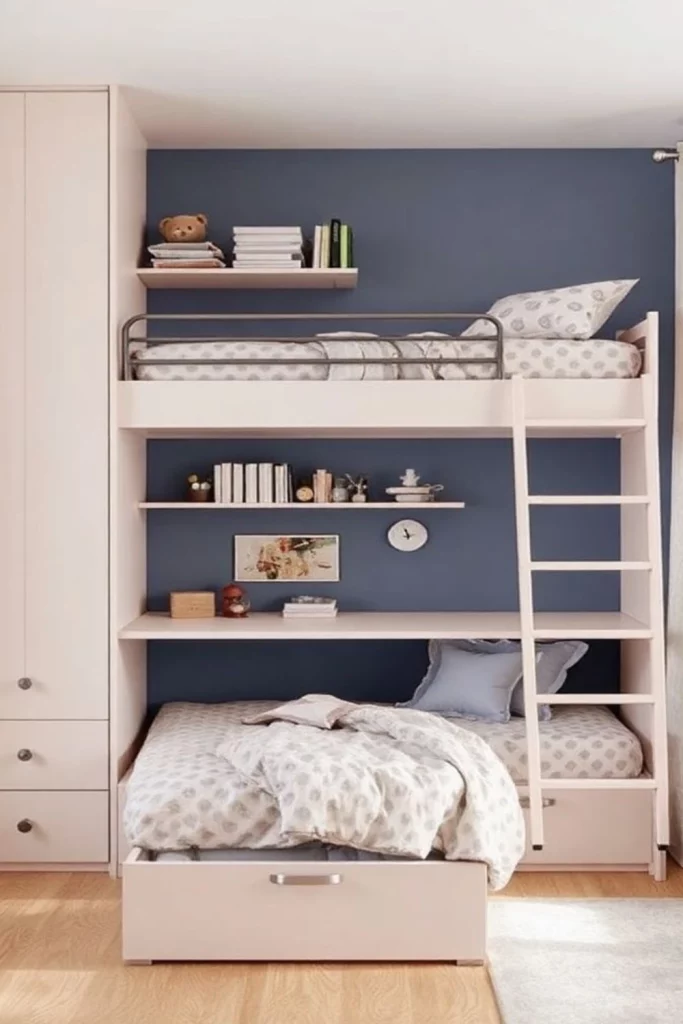
Space Saving Furniture
When designing a small room for kids, choosing the right furniture is key to space and functionality. Multifunctional furniture is a must in small kids’ rooms. It allows for multiple uses without taking up too much space. For example, beds with built-in storage drawers or loft beds with a desk underneath are practical solutions and keep the room tidy. Murphy sofa beds and foldable desks can change the room’s purpose daily, study or play.
Flexibility and Versatility
Flexibility is key in small kids’ room design. Choose adjustable and foldable furniture to accommodate changing needs as the child grows. Modular pieces like sectional sofas and stacking chairs can be rearranged to create different seating or learning areas. Movable partitions or room dividers add to the versatility, of designated spaces for sleeping, playing, and studying without sacrificing efficiency.
Vertical and Wall Space
Use vertical and wall space to maximize the area. Wall-mounted shelves and floating units display books, toys, and decor and keep the floor clear. Tall storage units that go from floor to ceiling draw the eye up and make the room feel bigger.
Simple and Compact
Go for sleek and modern furniture with clean lines to not feel cramped. Avoid big pieces; instead, opt for narrow ones like round nightstands or slim desks that save space and look good. The simple decor creates a spacious feel and emphasis on functionality.
By choosing and arranging furniture that serves multiple purposes, is flexible, and uses vertical space well, you can have a stylish and functional space for kids in a 10 sqm room.
Decorative Elements
Decorating a kid’s bedroom of about 10 square meters can be fun and functional. The right decorative elements enhance the space while reflecting the child’s personality and interests. Here are key ideas for creating an inviting and stylish atmosphere.
Color Schemes
Choose a cohesive color scheme to maximize the small space. Soft shades like pastel pink, blue, or green create a calm environment. Bold colors add energy and excitement. A monochrome palette offers a clean design that looks stylish.
Patterns and Textures
Incorporate geometric patterns to add interest without overwhelming the room. Simple shapes like triangles and chevrons work well in wallpapers, wall decals, or painted designs. Use pastel-colored accessories, such as cushions or rugs, to introduce textures that provide warmth and comfort.
Wall Art
Use minimalist wall art to add meaning and visual appeal. Simple line drawings, monochrome prints, or colorful murals reflecting the child’s interests enhance creativity and personalize the space. Artwork should resonate with the child to stimulate their imagination.
Open Shelving
Install open shelving as a stylish storage solution. It keeps toys and books accessible while saving floor space. This setup allows for a curated display of favorite items or artwork, making the room feel personal.
Lighting
Choose the right lighting to change the room’s ambiance. Soft, warm lighting options like string lights, table lamps, or wall sconces create a cozy atmosphere. Place fixtures strategically to highlight key areas and enhance the overall design, making the space inviting for both play and relaxation.
Personal Touches
Balance decor with personal elements in a child’s room. Include cherished toys or books to make the space feel homely. Consider removable wall decals for themes that can change as the child grows, allowing easy updates without major renovations.
By selecting thoughtful decorative elements, you can create a vibrant and functional bedroom for kids that reflects their interests while maintaining a stylish design.
Personalization
Personalizing a child’s bedroom is essential. It creates a space that feels like theirs and sparks creativity. Use their hobbies and interests in the decor. Choose themed bedding or wall art featuring their favorite characters. This approach makes the room inviting and visually appealing.
Displaying Artwork and DIY Projects
Create a gallery for your child’s artwork. Use clipboards, frames, or wire systems to display their creations. This keeps the room fresh and allows your child to feel proud of their work. Engage in DIY projects together, like painting murals or making mobiles. These activities add personal touches and reflect your child’s personality. Involving them in design boosts their confidence and nurtures their creativity.
Functional and Fun Spaces
Set up areas for learning and play. A sturdy desk for homework and crafts is important. Add open shelving for collectibles to keep things organized. Include interactive elements like chalkboard walls or magnetic boards to encourage hands-on learning. Create cozy reading nooks or dress-up corners for relaxation and imaginative play.
Interactive and Educational Decor
Use educational decor to make learning fun. Hang large wall maps, alphabet posters, or dual-purpose play mats that also serve as learning tools. These items beautify the room while inspiring curiosity. Personalize the space with name signs or bright-patterned curtains to add flair. This creates a vibrant atmosphere that reflects your child’s individuality.
By blending personal interests with functional design, you can create a bedroom that serves as both a sanctuary and a playground for your child’s imagination!
Maintenance and Practicality
Importance of Regular Maintenance
Regular maintenance keeps a child’s bedroom safe and functional. Check for wear and tear, such as loose screws or unstable furniture. These checks help prevent accidents and prolong the life of the furniture. Involve children in cleaning their space. This teaches them to be organized and responsible. Set aside time each week to sort through toys, books, and clothes. This practice keeps the room tidy and allows for adjustments based on their changing interests.
Tips for an Organized Space
Encourage kids to put away toys and books after use. This habit promotes a clutter-free environment. Rotate toys and books seasonally to keep the room fresh and reduce mess. As children grow, replace furniture that no longer meets their needs. This keeps the space functional and appealing.
Selecting Durable and Non-Toxic Materials
Choose furniture that is durable and safe. Avoid items made with harmful substances like lead paint or toxic finishes. Select non-toxic materials that meet safety standards for peace of mind. Consider sustainable options to reduce environmental impact while ensuring safety.
Multi-Functional Furniture Solutions
In small bedrooms, multi-functional furniture is practical. Look for cribs that convert into toddler beds or sofas that serve as guest beds. These choices maximize limited space. Furniture with built-in storage, like beds with drawers or desks that double as vanities, helps keep everything organized without taking up extra room.
Cleaning and Maintenance Considerations
Select furniture that is easy to clean. Upholstery with stain-repellent finishes or removable covers simplifies maintenance. Materials like leather and vinyl are easy to wipe down, while memory foam mattresses resist dust mites, promoting a healthier sleeping environment. Choose furniture with rounded edges for added safety, making it suitable for active children.
By focusing on maintenance and practicality, you create a safe, organized, and inviting bedroom for your child!

